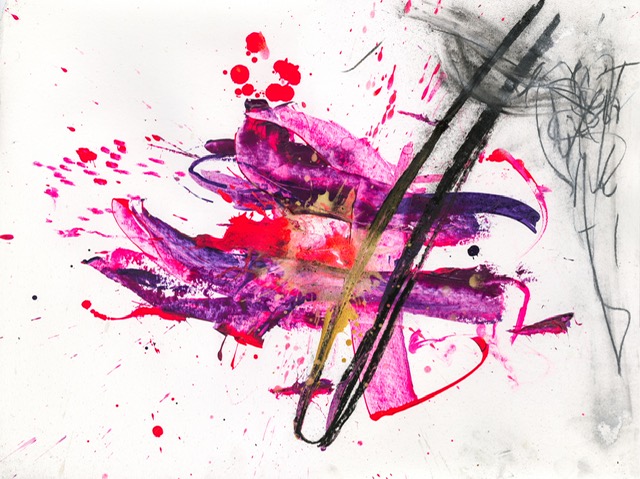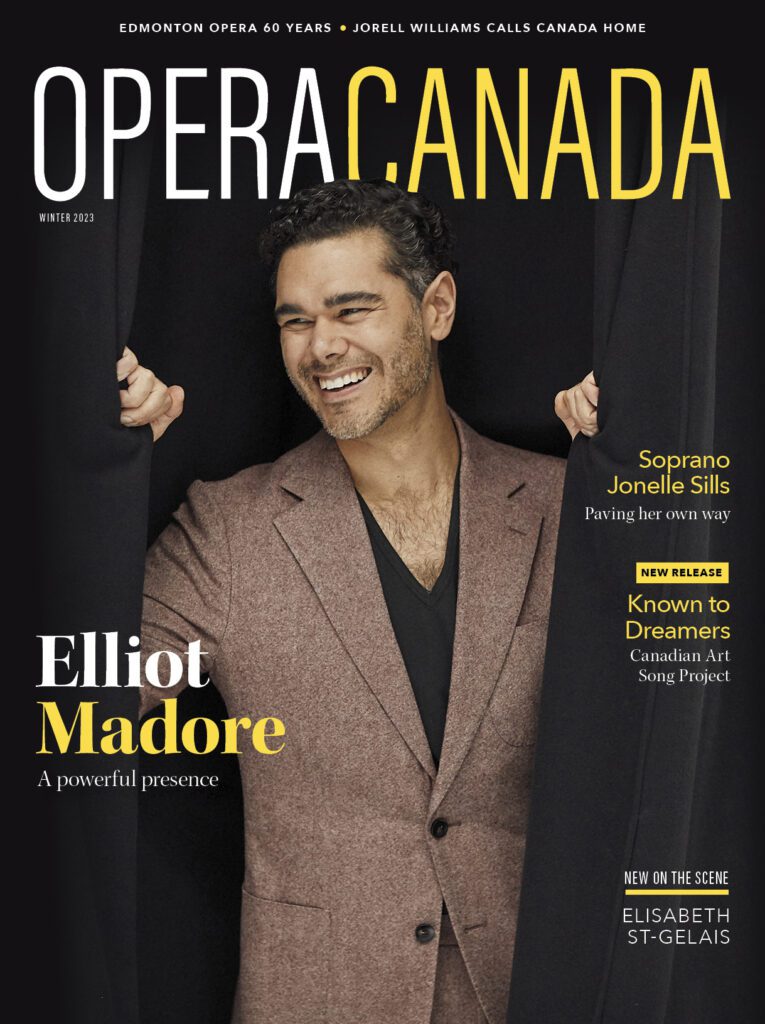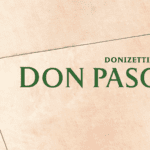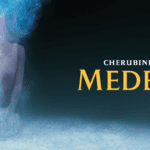New Music Edmonton (NME), founded in 1985, under a different name, by the Canadian composer Violet Archer, promotes contemporary composition in the broadest sense, and its mandate includes introducing Edmonton audiences to artists beyond the city’s local preserve. On March 26, in a black box theatre in Edmonton’s west end, NME hosted Quebec multidisciplinary artist Symon Henry with three singers and musicians who presented Henry’s Opera Désert Mauve, inspired by Quebec novelist Nicole Brossard’s Désert Mauve.
Henry is in the school of composers who convey their musical intentions not through conventional notation, but graphically. During the one-hour performance of their opera, projected on a screen behind the musicians was a stream of images, which I took to be some sort of visual gloss on the sounds, but learned after during an interesting Q & A with Symon and the performers was actually their score for the piece. This was just one of several revelations that the post-performance chat clarified, and for which I was grateful.
My visceral, unmediated reaction to this notion of opera was admiration and bafflement. The score was an ever-changing flow of smears, reminiscent of finger painting, blobs and dabs of black and brown paint, colourful abstract splashes cut by emphatic black lines, and other amorphous signals. The pace of the flow, in retrospect, coincided with the sonic and emotional energy of the drama Symon was conjuring with their visually evocative musical guidance.
The performers were female vocalists (Talia Fuchs, Virginie Mongeau and Elizabeth Lima), French hornist Benoît Fortier, and cellist Rémy Bélanger de Beauport, along with an electroacoustician Émilie Mouchous, offering various atmospheric vibrations. I learned the graphic score gave considerable leeway in how they interpreted Symon’s visual cues, but cellist Bélanger de Beauport explained later that in its own way, the score demanded a precision not unlike any other form of musical notation.
That precision, with some exceptions, was hard for an inexperienced listener to discern. The singers, all classically trained, emitted an assortment of sound, some of them conventionally operatic, but they were as likely to generate noises, howls, cacophonous outbursts, ululations, gutteral commentary, and an assortment of other vocal emissions uniquely human but not generally categorized as musical. The effect overall was, however, definitely interactive, communicative, like any other type of opera, and the degrees of angst, Symon drew from an aspect of Brossard’s novel, were unambiguous and theatrical.
Of that seminal novel, Margaret Atwood wrote, “[Brossard’s] effects too are the effects of collisions: brilliant sparks and white hot fragments, alarm and the possibility of danger, and a momentary light in which we glimpse the bizarrely distorted faces of strangers, which turn out after all to have been our own.”
Note that in Atwood’s view, even where there is light, it is not a balm, but rather a distorting agent. This seems to be the spirit Symon tries to capture in their often-tumultuous sonic palette, and the singers, in particular, rendered the complexities of this vision passionately, with a kind of liberated feeling that singing may begin before any sound is made, and intense emotion is difficult to shape but can be conveyed, nonetheless.
The musicians, too, played their instruments as though they wanted to speak the way a novel’s character would. Much of the sound Fortier produced on his horn was more like muttering and murmuring, even moaning, than hard-won notes from a trained embouchure. The cellist, at times deliberately shaped lines, at times ran glissandi up and down the neck with emotional intent beyond the musical, perhaps.
One of the themes of the novel is attempts at translation, and Henry generously presented sections of the original French text in English. The blocks of narrative from the several perspectives layering Brossard’s novel offered a glimpse into what the original text was saying, but given everything that was going on, I can’t say I left understanding the dramatis personae or the personality as well as the aesthetic conflicts Brossard was exploring.
Nevertheless, as operas go, this unusual work had the pulse and the weirdly focused attention of a musical work in the tradition of musical storytelling.
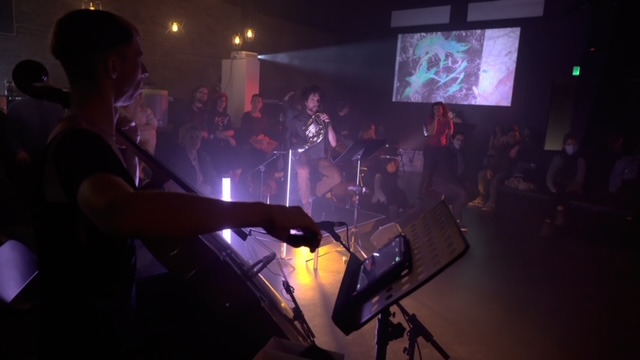
© Marco Dubé
Wednesday, May 17, 2023 at 6pm
Women’s Art Association, Toronto, ON
An Event To Support Opera Canada
TICKETS HERE
Related Content ⬇
Opera Canada depends on the generous contributions of its supporters to bring readers outstanding, in-depth coverage of opera in Canada and beyond. Please consider subscribing or donating today.

